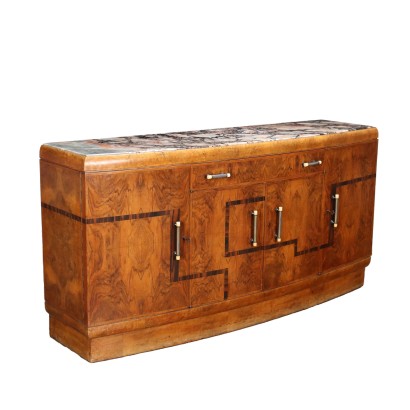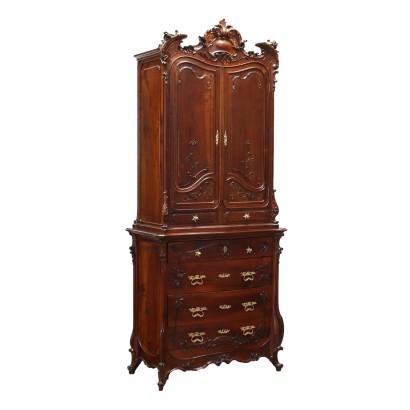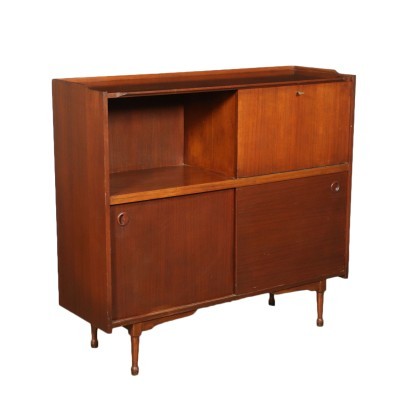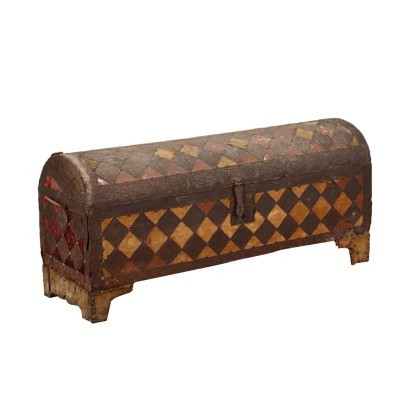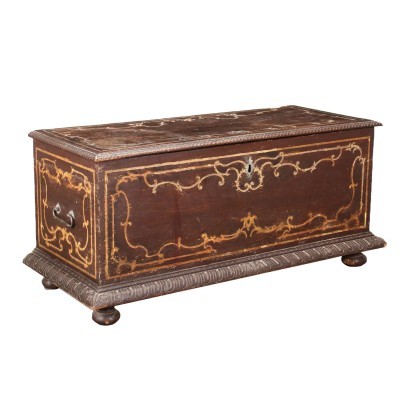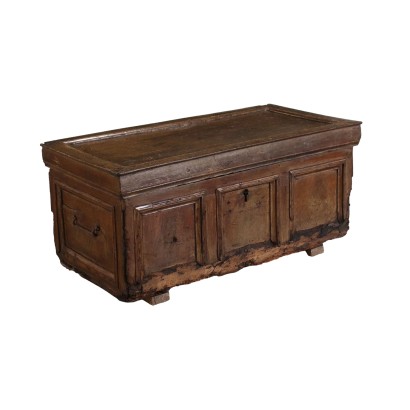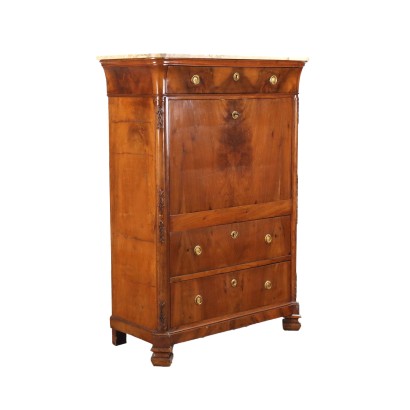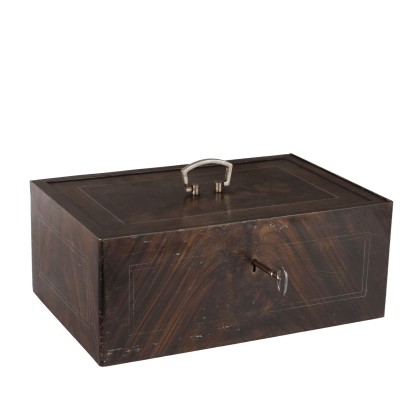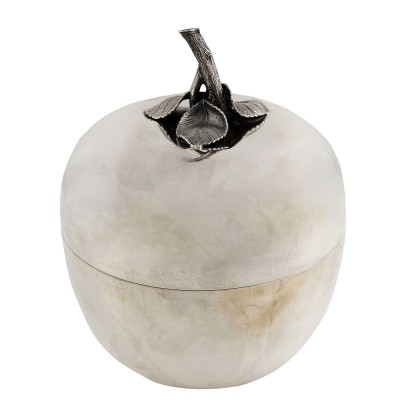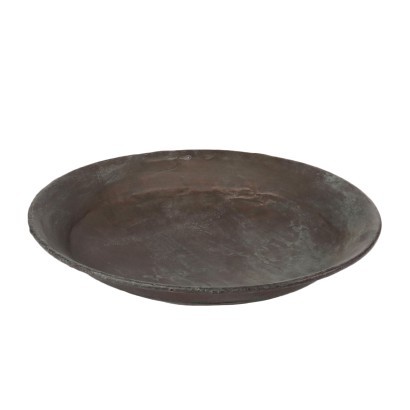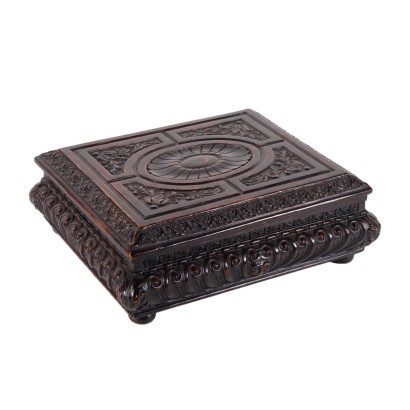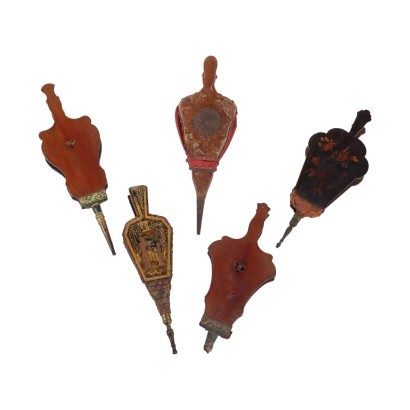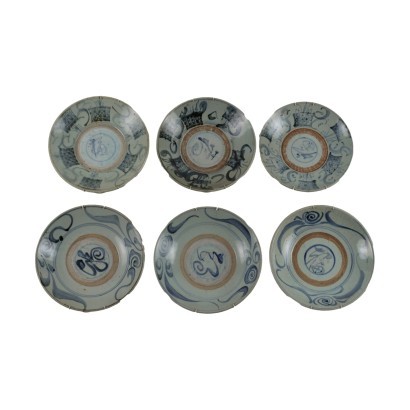Cupboard Art Déco Walnut Italy 1930s - Italy 1930s
Features
Italy 1930s
Style: Art Deco (1920-1950)
Age: 20th Century / 1901 - 2000
Origin: Italy
Main essence: Walnut
Material: Bakelite , Walnut Burl Veneer , Exotic Wood , Veneered Wood , Other Marbles , Brass
Description
Art deco cupboard veneered in walnut briar and with peach blossom marble top, Italy 1930s. Front decorated with geometric inlays in exotic wood and equipped with 4 doors plus drawer in the band. Interior veneered with inlays; brass and bakelite handles.
Product Condition:
Product that due to age and wear may require restoration and resumption of polishing.
Dimensions (cm):
Height: 100,5
Width: 200,5
Depth: 55
Additional Information
Style: Art Deco (1920-1950)
The name Art-Decò derives from the exhibition held in Paris in 1925, which was called the International Exhibition of Modern Decorative Arts and was the successor of the Liberty style.Art-Decò is a stylistic historical period formed after the Liberty floral period, shortly after the end of the First World War.
There was an almost radical change anticipated by the growth of the Precisionist movement and that of Cubism (in art), the Art-Decò furnishings were characterized by decidedly more rigid lines and the presence of geometric figures, definitively abandoning the sinuous and moved lines , of objects and furnishings, of the previous Liberty period.
It was established from the dawn of 1915 until the early 30's.
This style was transversal and major exponents were created in the most diverse art forms, from urban architecture to painting, from sculpture to glass masters, from the production of objects as a complement to furnishings to jewelry.



